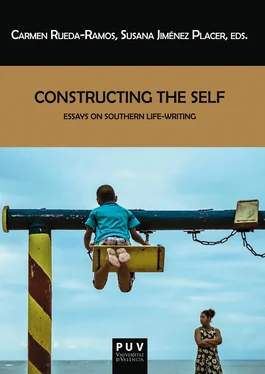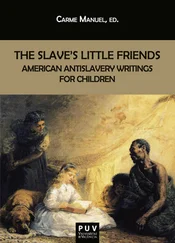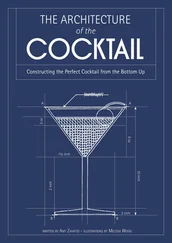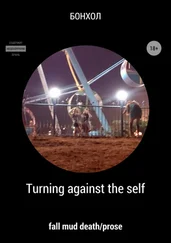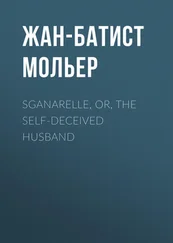AAVV - Constructing the Self
Здесь есть возможность читать онлайн «AAVV - Constructing the Self» — ознакомительный отрывок электронной книги совершенно бесплатно, а после прочтения отрывка купить полную версию. В некоторых случаях можно слушать аудио, скачать через торрент в формате fb2 и присутствует краткое содержание. Жанр: unrecognised, на английском языке. Описание произведения, (предисловие) а так же отзывы посетителей доступны на портале библиотеки ЛибКат.
- Название:Constructing the Self
- Автор:
- Жанр:
- Год:неизвестен
- ISBN:нет данных
- Рейтинг книги:3 / 5. Голосов: 1
-
Избранное:Добавить в избранное
- Отзывы:
-
Ваша оценка:
- 60
- 1
- 2
- 3
- 4
- 5
Constructing the Self: краткое содержание, описание и аннотация
Предлагаем к чтению аннотацию, описание, краткое содержание или предисловие (зависит от того, что написал сам автор книги «Constructing the Self»). Если вы не нашли необходимую информацию о книге — напишите в комментариях, мы постараемся отыскать её.
Constructing the Self — читать онлайн ознакомительный отрывок
Ниже представлен текст книги, разбитый по страницам. Система сохранения места последней прочитанной страницы, позволяет с удобством читать онлайн бесплатно книгу «Constructing the Self», без необходимости каждый раз заново искать на чём Вы остановились. Поставьте закладку, и сможете в любой момент перейти на страницу, на которой закончили чтение.
Интервал:
Закладка:
Nahem Yousaf analyzes Philippe Labro’s fictionalized southern self and his portrait of southern culture in The Foreign Student (1986), which Yousaf describes as “a memoir with the texture of fiction.” Yousaf’s essay on Labro—a French journalist, writer and filmmaker—is an example of how southern culture has influenced the literary and cultural production of other countries. Through a hybrid between fiction and memoir, as Yousaf explains, Philippe Labro tells the story of his southern experience as a young student in the 1950s. At the time of globalism, this essay opens up an interesting perspective because it acknowledges the global dimension of southern culture and life-writing. Reflecting a cross-cultural approach to southern life-writing, Yousaf shows that Labro’s fictionalized southern memoir blurs the boundaries between the local and the global, and between the national and the transnational, in relation to southern culture. Yousaf defines The Foreign Student as a coming-of-age story in which Labro nostalgically looks back on the year he spent in Virginia as a student. By a subtle but conscious manipulation of his lived experiences there, Labro constructs a fictionalized younger self for whom the 1950s South represents a crucial and self-defining moment that marked the beginning of his life as a man. The discussion of Labro’s text, focusing on its southernness and on its generic status, makes Yousaf claim that The Foreign Student is precisely the “‘southern’ memoir” of Labro’s fashioning of his younger self: “Labro acts as guardian of his younger self and re-possessor of that self, nostalgically and sensually re-connecting to the vanished world of youth.”
Part 4 “Transgressors and Performers of Self” includes four essays that examine the different strategies and masks that Appalachian and southern women use to construct and deconstruct a self. Whether they write from marginal positions or embrace a certain degree of marginality, these authors always transgress (generic and societal) boundaries and become performers of self. In her contribution, Carmen Rueda-Ramos discusses the transgressive quality of the life narratives written by Appalachian women writers during the memoir boom of the 1990s. Rueda-Ramos explores how some of these women writers “push the limits of the autobiographical genre to construct their selves and portray their world.” With their memoirs, they succeed in making their marginal voices heard by “subvert[ing] the conventions of a genre they often find too restrictive” and using it as a “weapon for self-representation.” Rueda-Ramos explains that the combination of the textual, visual, oral, performative and ethnographic approaches allows these women also to blend the personal, familial and collective experience, thus blurring the boundaries of genres and of self and Other. Their formal experimentation with what Caren Kaplan calls “outlaw genres” and with hybrid autobiographical narratives enables them to challenge dominant narratives and present a “more inclusive and relational view of the self, which they see as tied to family, community and region.” Their interest in crossing the boundaries of the autobiographical genre lies precisely in their power to subvert and reformulate selfhood. Rueda-Ramos centers her analysis on the life narratives of three important Appalachian authors: Dorothy Allison’s Two or Three Things I Know for Sure , bell hooks’s Bone Black: Memories of Girlhood , and Mary Lee Settle’s Addie: A Memoir. Whether they use their memoirs as performative (and transformative) autobiographical acts, or as a way to blur the boundaries between the individual and the collective, or as examples of the so-called “relational auto/biographies” which also tell regional history, these Appalachian women writers find in hybridity “a way to channel the autobiographical impulse without being trapped by genre conventions.”
The rebellious and transgressive acts of women who proudly exhibit their condition as failed southern ladies become the main focus of Susana Jiménez Placer’s essay. By centering on the family and different generations of female family members, she examines the memoirs of three southern white women—Virginia Foster Durr’s Outside the Magic Circle , Florence King’s Confessions of a Failed Southern Lady , and Shirley Abbott’s Womenfolks: Growing Up Down South. These women saw their upbringing conditioned by the social expectations usually placed on white middle-class women in the New South. But they used their autobiographies to explore the personal experiences that led them to challenge these traditional expectations, mainly symbolized by the image of the southern lady, and thus deconstruct the (false) self. Consequently, these white women failed as southern ladies and happily became “pariahs,” who proudly identified this failure as the first step towards self-definition through the “achieve[ment of] intellectual independence and personal success as southern women.” Acknowledging “the mutual dependence existing between [the lady] image and that of the black mammy,” so clearly manifested in these memoirs, Jiménez Placer turns then to focus on the white memoirists’ confrontation with the artificial image of the black mammy as an inevitable complement to that of the lady in the southern charade. Jiménez Placer notes that, in contrast to their clear-sighted determination to lay bare the mutilating effects of the lady image, confronting the parallel character of the mammy mask represents an unsurmountable challenge for Durr and King but not for Abbott.
The remaining two essays connect life-writing and performance, showing how some narrators use their “life texts” to put on a transgressive show of Dixie while others use a comedic mask in their memoirs to construct their selves. Beata Zawadka’s contribution examines the role of southern actress Tallulah Bankhead and her Hollywood performances in popular movies of the 1950s as acts of southern subversion and transgression. In her article Zawadka views the southern lady as a Dixie act and the embodiment of what she calls “the southern cultural transvestism . . . disclosing the region’s fe/male identity.” Interpreting the southern lady ideal as “drag” and as “the embodiment of the culturally transgressive Dixie,” Zawadka finds a clear example of this hypothesis in Tallulah Bankhead’s hybrid acting style in three of her movies, My Sin (1933), Lifeboat (1944), and Die! Die! My Darling (1965). The transgressive nature of the actress’s performance in these movies can be seen in her use of different strategies and methods—the “living mask” that allows her to construct a new identity in My Sin ; and Stanislavsky’s acting Method that enables her to have “private moments” and use her own personal emotions for self-discovery, recreating through her female characters the southern spirit and at the same time using it to reflect on “her own and the South’s” identity in Lifeboat . The third movie analyzed, Die! Die! My Darling , on the other hand, represents what Zawadka calls “transgressive ‘hagsploitation,’” in which Bankhead offers a “self-reflective” characterization of her “cinematic or real life (southern) victimization” and her identification with the South as a culture.
The fourth and last essay in this section takes us back to Appalachia. In this essay the concept of the performing self is implied again in Sandra Ballard’s discussion of a group of Appalachian women writers who use humor in their memoirs. Ballard explores their use of humor as a comedic mask, as a performance, that helps them negotiate painful events. In the presence of stressful or traumatic situations, these authors resort to humor not for mere entertainment but to construct a version of self that is stronger and more able to cope with adversity. According to Ballard, “Appalachian writers are adept at navigating tragedy without self-pity, masking pain, and in many cases, creating memoirs that challenge power structures and deliver painful autobiographical performances with humor.” Ballard provides numerous examples of the use of humor to counterbalance grief through the works of Harriette Arnow ( Old Burnside ), Lily May Ledford ( Coon Creek Girl ), Mary Lee Settle ( Addie: A Memoir ), bell hooks ( Belonging: A Culture of Place ), Dorothy Allison ( Two or Three Things I Know for Sure ), and Lee Smith ( Dimestore: A Writer’s Life ). These women’s autobiographical writings, according to Ballard, reveal that “humor become[s] a survival strategy,” a performance “to mask pain [and] to creatively hide dark feelings and grief.” Interestingly, Ballard finds connections between these Appalachian women writers and other southern African-American women writers, as well as between their mountain memoirs and slave narratives and black autobiographies, suggesting that they all use humor as a powerful mask of self-construction to survive “in a world that has offered them little cause for laughter.”
Читать дальшеИнтервал:
Закладка:
Похожие книги на «Constructing the Self»
Представляем Вашему вниманию похожие книги на «Constructing the Self» списком для выбора. Мы отобрали схожую по названию и смыслу литературу в надежде предоставить читателям больше вариантов отыскать новые, интересные, ещё непрочитанные произведения.
Обсуждение, отзывы о книге «Constructing the Self» и просто собственные мнения читателей. Оставьте ваши комментарии, напишите, что Вы думаете о произведении, его смысле или главных героях. Укажите что конкретно понравилось, а что нет, и почему Вы так считаете.
